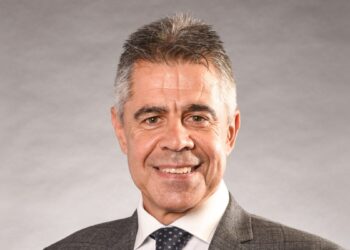Speaking in a recent BT webinar, BT technical consultant Tim Howard reminded SMSF professionals that in order to meet the definition of an Australian superannuation fund, an SMSF needs to meet three tests.
One of these tests is that the central management and control (CM&C) of the fund is ordinarily in Australia. The central management and control of the fund refers to high-level activities, Mr Howard explained, such as formulating the investment strategy, updating and varying the investment strategy, formulating a strategy for reserves if the fund has them, and determining how the fund’s assets are to be used to fund member benefits.
Ordinarily in Australia means that the CM&C is usually, regularly or customarily undertaken in Australia. Mr Howard stated that there needs to be an element of continuity or permanence to be considered ordinarily in Australia, such as having an established place of residence in Australia.
Mr Howard said there is often a lot of confusion around the ability to exercise central management and control where you are outside of Australia as long as that absence is temporary, and you are ordinarily back here in Australia.
One of the key areas of contention, he explained, is around the safe harbour provided under section 295-95(4) of the ITAA 1997, which effectively allows someone to be temporarily absent from Australia for a period no longer than two years if that absence is temporary.
“The confusion over the years has always been that any absence over two years cannot be temporary, it still can be, but this is just a safe harbour in the ITAA 1997 that makes it clear for people that a temporary absence certainly can be less than two years,” he said.
“If they are temporarily absent for more than two years, they still can meet the test.”
Where SMSF professionals are looking at this exemption for their clients, he said, the main focus needs to be on whether the absence is temporary or not.
“If it’s not temporary, then even if it’s less than two years, you will have failed this test and you won’t be able to use this exemption,” he cautioned.
It is also important to be aware, he said, that these tests are determined in real time and cannot be considered retrospectively.
“It isn’t something where you can say ‘we’re going overseas permanently’, but then COVID does something that means you’re coming back within a year, but you’ve sold your main residence, given away furniture, and sold the cars, but you’re then going to use the temporary absence exemption,” he warned.
“That kind of example is not a temporary absence, so, again, you wouldn’t be able to use this safe harbour step in an example like that.”
Mr Howard gave an example of Bob and Maria who own their own SMSF, which was established in 2014 from their home in Victoria.
“Bob is an engineer, seconded to a European office on 1 July 2019 for a two-year contract. The intention was always to go for two years and then return. However, due to a crucial project, Bob’s stay was extended for an additional 12 months. While they are overseas, they rent their Victorian home, maintain all bank accounts, and insurances in Australia. During this three-year period, the CM&C of the SMSF was run from Europe,” he explained.
As there was always the intention to return to Australia, there was a specific purpose to the extension, and it was a temporary absence due to the fact that their home and other assets were maintained in Australia; Mr Howard said in this example, the central management and control test would be based in this example.
Mr Howard used another example with Josh and Clara, who travel overseas on an extended working holiday with no expected return date.
“They manage the CM&C of the fund from overseas. They end the lease on their rented home, sell large furniture and give smaller items away. Personal bank accounts and the SMSF is all they retain in Australia,” he explained.
“If they were to return after 18 months due to the increasing difficulties of seeking work and global travel at the height of the pandemic, would the absence from Australia be temporary?”
Due to the permanent and indefinite nature of the trip and the fact that they divested themselves of major assets, Mr Howard said the temporary absence exemption could not be applied in this case.
Based on the facts at the time they took the trip, they didn’t have plans to return, he noted, which cannot be looked at retrospectively.
Mr Howard noted that residency relief had been provided for the 2019-20, 2020-21 and 2021-22 financial years in response to COVID for people that might fail these tests.
“The ATO have stated that if COVID has affected your ability to move or changed your plans, that they won’t, for at least for the previous two financial years and the current financial year, direct compliance resources at enforcing these rules,” he said.
He also noted that the government in the budget last year made announcements that it plans to relax the residency requirements for SMSFs and small APRA funds by extending the central control and management test safe harbour from two to five years for SMSFs and removing the active member test for both fund types.


